Football is played in amazing arenas so we have compiled a list of the top 10 biggest stadiums in Europe.
Football or soccer as 9 countries in the world call it, is the most popular sport in the world in terms of participation. So it’s no surprise that the game is played professionally in some of the biggest arenas in the world.
Football is really part of everyday culture in Europe as well. Millions of people live in anticipation of watching their favorite club play every single week.
The thrill of winning, the electric atmosphere inside the stadium, and the passion for supporting the team, are all reasons why football is so popular.
Let’s take a look at the biggest stadiums of the most popular football clubs in Europe!
PS: This list doesn’t include national stadiums such as, for example, “Wembley Stadium” in England or the “Stade de France” in France. This also just includes stadiums in Europe, please check out our list of the biggest stadiums in the world to see even more!
10. NSC Olimpiyskiy – Kiev
- Club: FC Dynamo Kiev
- Country: Ukraine
- Current Capacity: 70,050
The Olympic National Sports Complex is located in the city’s central Cherepanova Hora (Cherepanov Hill), Pecherskyi District. It’s the biggest sporting venue in Ukraine and hosts games of both FC Dynamo Kyiv, the most prestigious club in the country, and the Ukraine national football team.
The stadium is located in a complex with multiple other sports venues which were designed to host the Olympic Games. Some of the most notable moments were football games during the Summer Olympics of 1980, the final of the UEFA Euro 2012, and the 2018 UEFA Champions League Final.
The stadium was completely renovated in the year 2011 and was officially opened with a performance of world-famous singer Shakira on October 9, 2011, and a friendly game against Germany on November 11, 2011 (which ended in a 3-3 draw).
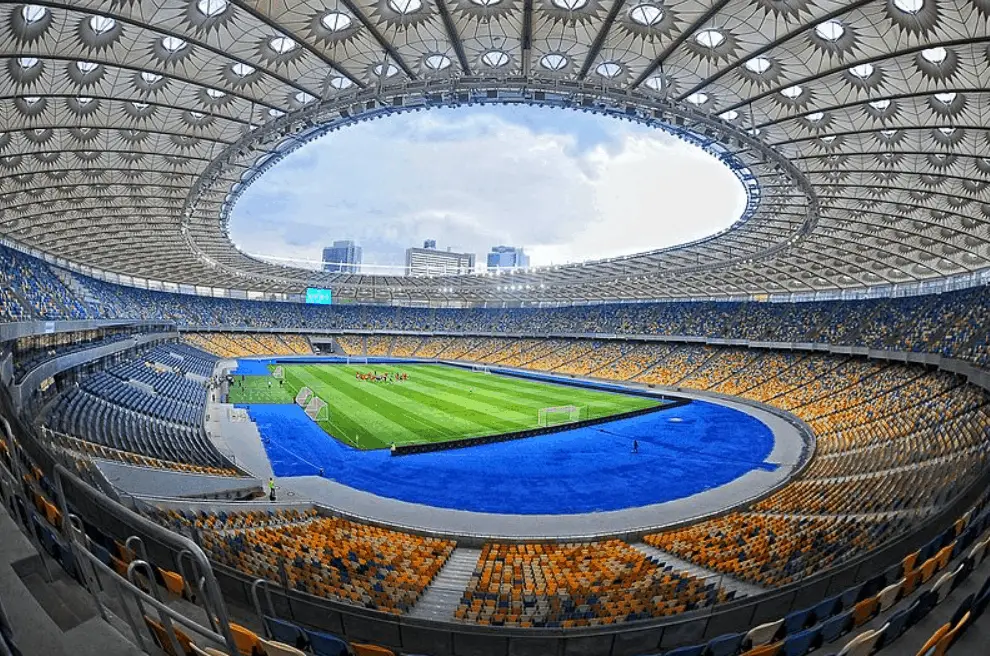
9. Stadio Olimpico – Rome
- Club: A.S. Rome and S.S. Lazio
- Country: Italy
- Current Capacity: 70,634
The Stadio Olimpico is the biggest sports venue in the Italian capital, Rome. It is home to two rival football clubs, A.S. Rome and S.S. Lazio, and is located within the Foro Italico sports complex just north of the city.
It’s owned and managed by the Italian National Olympic Committee, an organization for managing and organizing sports development within Italy. It’s used for many other sports as well including rugby and athletics, as well as for other events and concerts.
It was completely renovated and rebuilt for the 1990 World Cup which was held in Italy that year, and it hosted the 1990 World Cup Final as well, which was won by West Germany in a 1-0 win over Diego Maradona’s Argentina.
In 2009, the stadium also hosted the UEFA Champions League final which was won by FC Barcelona over Manchester United (2-0).
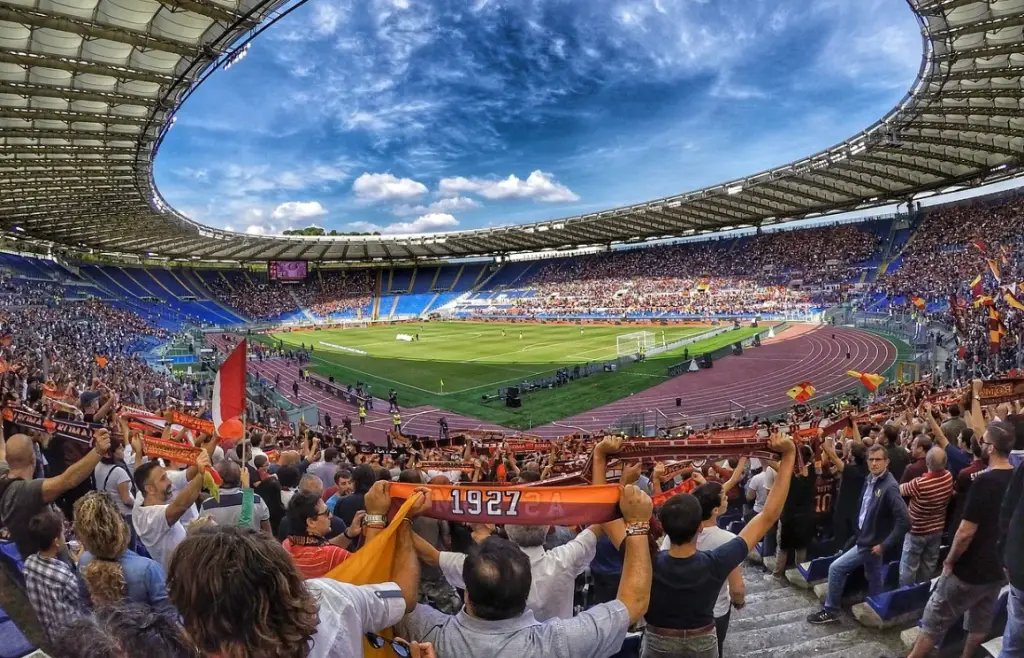
8. Olympiastadion – Berlin
- Club: Hertha BSC
- Country: Germany
- Current Capacity: 74,475
The Olympiastadion is located in the “Olympiapark Berlin” in Germany’s capital, Berlin. It has been the home of the Berlin-based football club Hertha BSC since the year 1963.
It was originally built for the 1936 Summer Olympics and used to have a capacity of over 100,000 in this period. This obviously means that the stadium isn’t just used for football but also athletics competitions.
This German stadium has been completely renovated in 2004 and has been turned into an all-seater with a capacity of 74,475.
It has held some of the biggest games in history, including the 2006 World Cup Final (won by Italy after a penalty shootout with France – 1-1 and 5-3) and the 2015 UEFA Champions League Final (won by FC Barcelona against Juventus – 3-1).
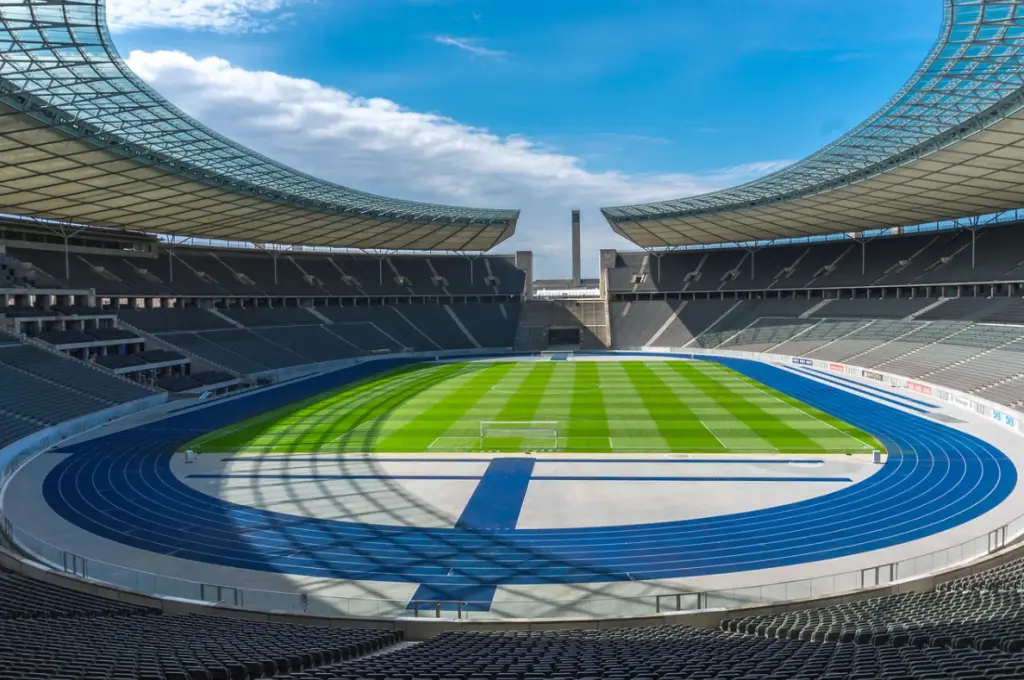
7. Old Trafford – Manchester
- Club: Manchester United F.C.
- Country: England
- Current Capacity: 74,879
Old Trafford is the home of one of the biggest football clubs in the world, Manchester United. It’s iconically being referred to as the “Theater of Dreams,” a name that refers to the transition of a mediocre club to one of the most popular clubs in the world, starting in the 1950s.
It’s the second-largest football stadium in England after Wembley, England’s national stadium, and has been the home of Manchester United since 1910.
It was seriously damaged during World War II and has been completely rebuilt after the war, an effort that took nearly 8 years. It has been constantly modernized and expanded over the following decades to become one of the most amazing football arenas in Europe today.
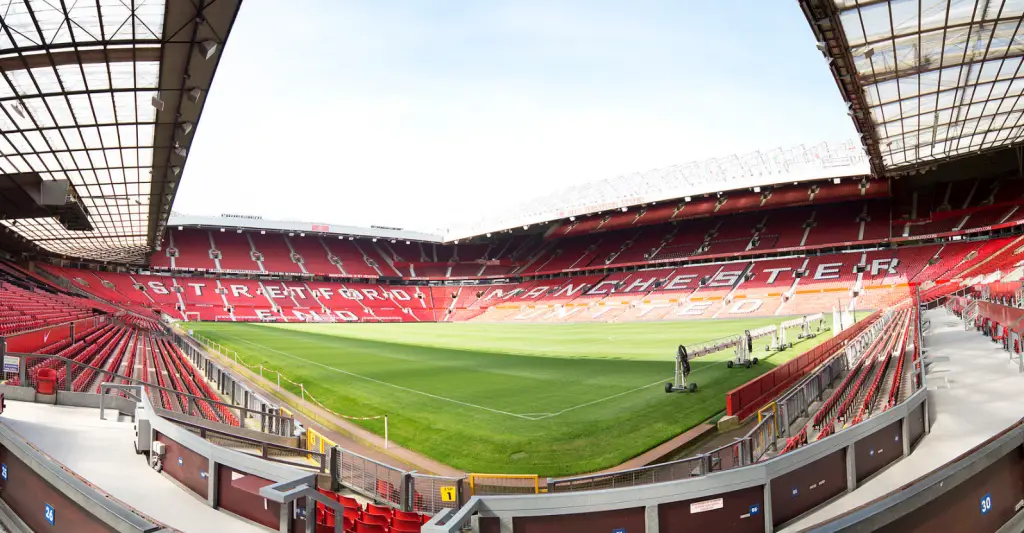
6. Olympic Stadium – Athens
- Club: AEK Athens F.C. and Panathinaikos F.C.
- Country: Greece
- Current Capacity: 69,618
The Olympic Stadium in Athens is also home to two of the most popular football clubs in Greece, Panathinaikos and AEK Athens. It’s part of the Athens Olympic Sports Complex and it’s named after the first marathon gold medal winner in 1896, the Greek Spyros Louis.
The stadium has been completely renovated between 2002 and 2004 and served as the main venue for the 2004 Summer Olympics.
The most impressive feature of the Olympic Stadium in Athens is its roof, which was designed by renowned Spanish architect Santiago Calatrava. The roof weighs an amazing 18,700 tonnes, covers a total area of 25,000 square meters, and costs a whopping €130 million!
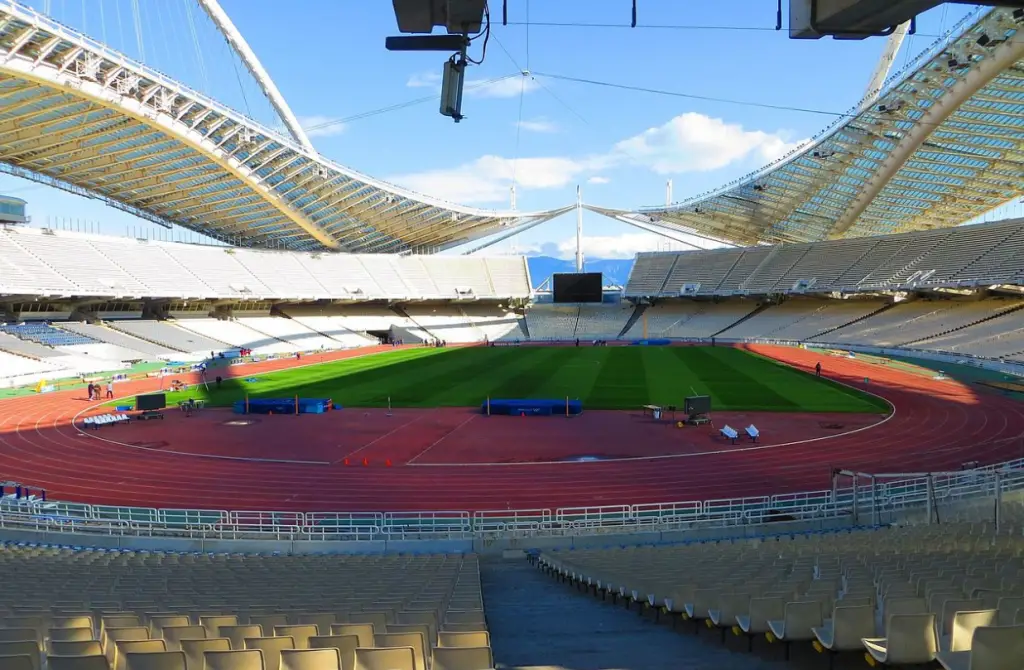
5. Allianz Arena – Munich
- Club: FC Bayern Munich
- Country: Germany
- Current Capacity: 75,024
The Allianz Arena is the amazing home of the most successful football club in Germany, Bayern Munich. They used to share the stadium upon completion in 2005 with their neighbors “1860 Munich,” but Bayern bought the 50% rights in April 2006 for €11 million.
The original capacity of the stadium used to be just 69,000 upon completion but has been expanded in several phases to its current capacity of 75,024. The stadium is famous for its exterior of inflated plastic panels and the option to change the color of the exterior of the stadium as well.
The naming rights of the stadium are in the hands of German finance provider “Allianz” for a total of 30 years. Remarkably, the stadium can’t be called the “Allianz Arena” during FIFA or UEFA games.
During the FIFA World Cup in 2006, it was referred to as the “FIFA WM-Stadion München,” and during UEFA matches it’s referred to as the “Fußball Arena München.”
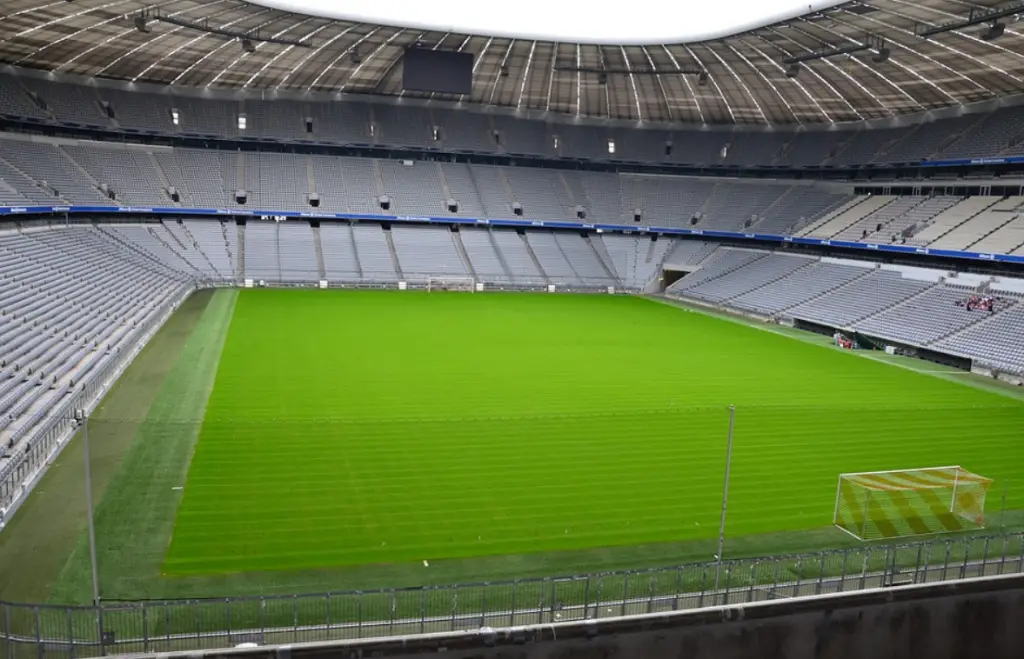
4. San Siro – Milan
- Club: A.C. Milan and Inter Milan
- Country: Italy
- Current Capacity: 75,923
San Siro, officially known as the “Stadio Giuseppe Meazza,” is the largest stadium in Italy and is the home of the two biggest rival clubs in the city of Milan, A.C. Milan, and Inter Milan.
It was renamed to honor Giuseppe Meazza, a football player who played for both Milanese clubs (although only briefly for A.C. Milan) and won 2 world cups with Italy in the years 1934 and 1938.
It’s one of the most iconic stadiums in Europe and it has been the venue for numerous important games. These include 3 games at the 1934 FIFA World Cup, 6 games at the 1990 FIFA World Cup, 3 games at the UEFA Euro 1980, and four European Cup finals, in 1965, 1970, 2001, and 2016.
On June 24, 2019, the sad news was announced that both Milanese clubs intend to build a brand new stadium for both clubs which would be located right next to San Siro stadium. This would also mean that the old stadium would be demolished.
Many efforts are being made to wait with the new plans until at least the 2026 Winter Olympics and Winter Paralympics. It’s unsure if and when the San Siro will be demolished in the future.
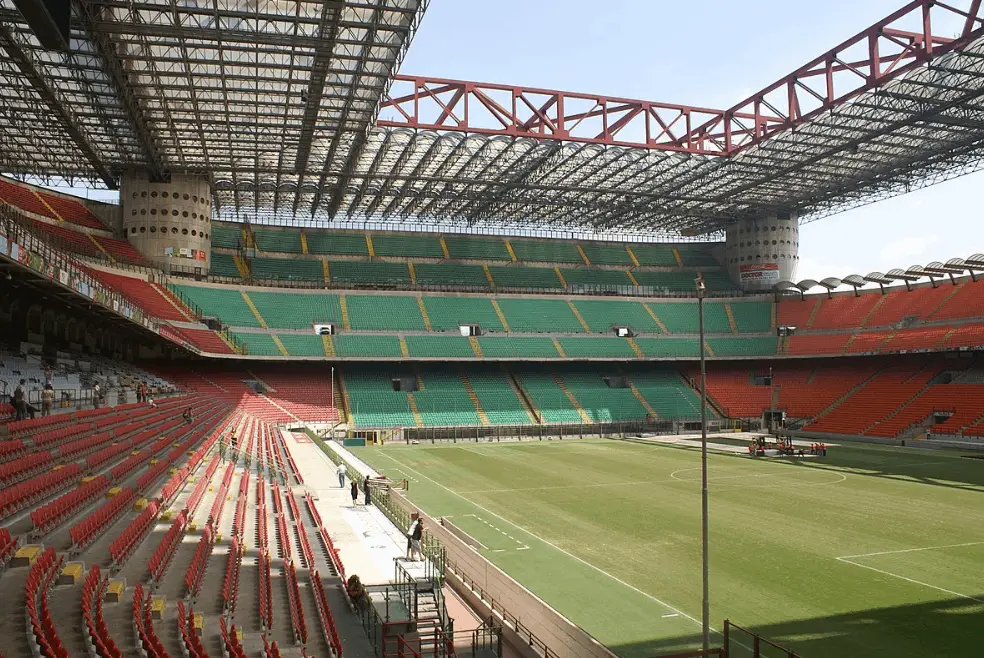
3. Santiago Bernabéu – Madrid
- Club: Real Madrid
- Country: Spain
- Current Capacity: 81,044
The Santiago Bernabéu Stadium is the home of one of the most popular football clubs in the entire world, Real Madrid. It was named after the president of Real Madrid, Santiago Bernabéu, who decided to build a completely new stadium for the club shortly after World War II.
The stadium in Spain was completed in 1947 and has since then seen a couple of major expansions and modernizations. At the moment, another renovation plan with a total cost of €525 million is underway to turn the Bernabéu into one of the most amazing football temples in the entire world.
It has been the venue for 4 European cup finals in 1957, 1969, 1980, 2010, and was the first stadium to host a FIFA World Cup and a UEFA Euro final, in 1982 and 1964 respectively.
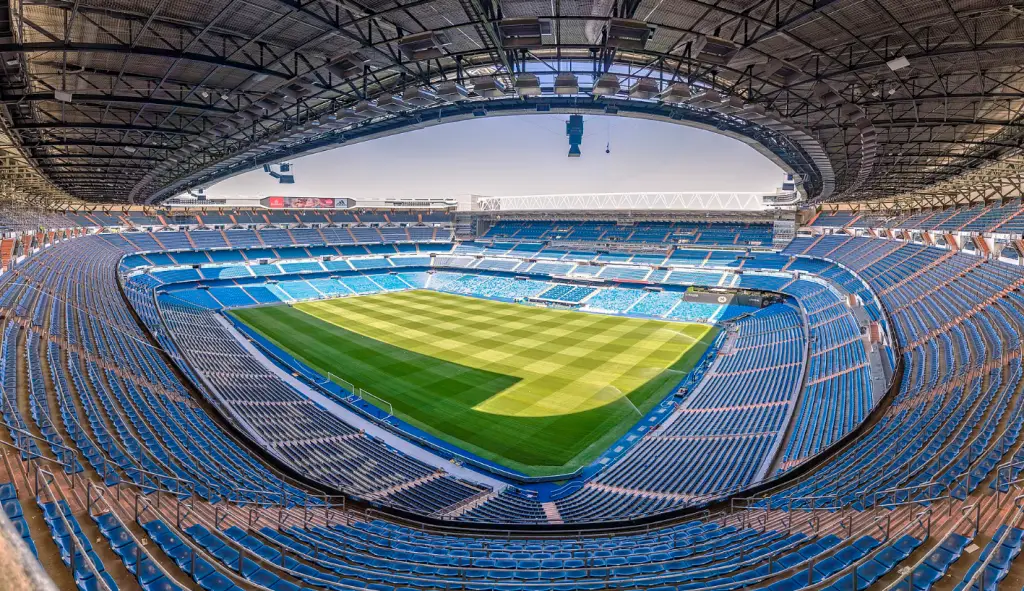
2. Westfalenstadion – Dortmund
- Club: Borussia Dortmund
- Country: Germany
- Current Capacity: 81,365
The Westfalenstadium in Dortmund, officially called the “Signal Iduna Park,” is home to one of the most popular football clubs in Germany, Borussia Dortmund. It is also the biggest stadium in terms of capacity if domestic matches are played.
The reason why it’s only the biggest for domestic matches (for international matches this is reduced to 65,829) is because of the stadium’s famous “Südtribüne” (South Stand), the largest terrace for standing supporters in all of Europe. This terrace is often referred to as “The Yellow Wall,” and is known to produce one of the best atmospheres in European football.
The stadium has hosted several games in both the 1974 and 2006 FIFA World Cups, and also the UEFA Cup Final in 2001, a thrilling match which ended 5-4 in favor of Liverpool against Spanish side Alavés.
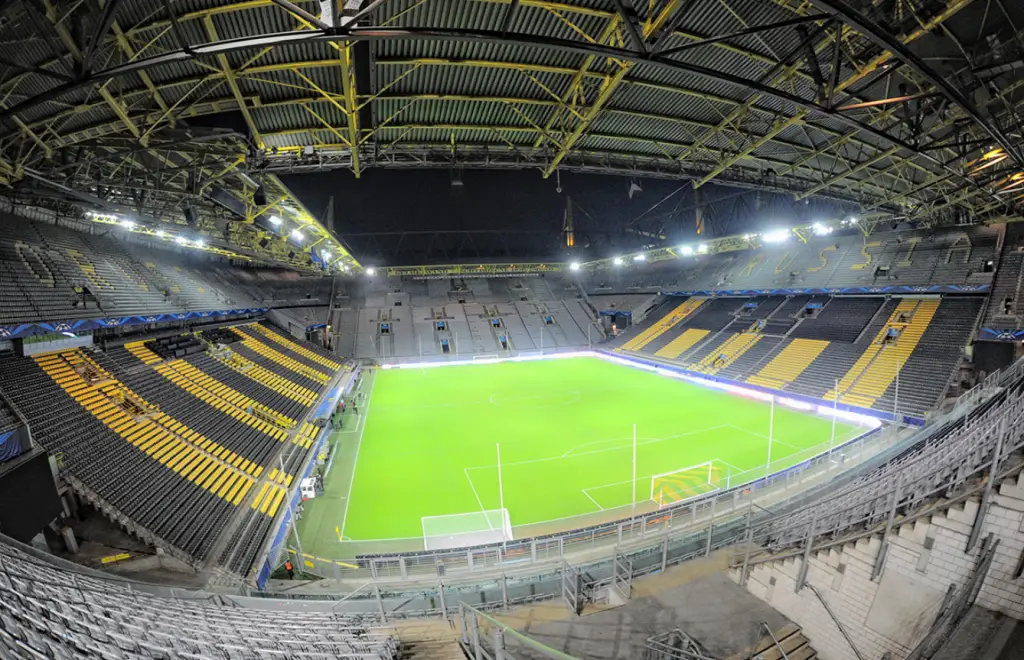
1. Camp Nou – Barcelona
- Club: FC Barcelona
- Country: Spain
- Current Capacity: 99,354
The number 1 in our top 10 biggest football stadiums in Europe list is the “Camp Nou” in Barcelona, home of one of the most successful football clubs in football history, FC Barcelona.
The stadium was completed in the year 1957 and has a current seating capacity of 99,354, making it not just the largest football stadium in Europe, but also the third-largest football stadium in the world.
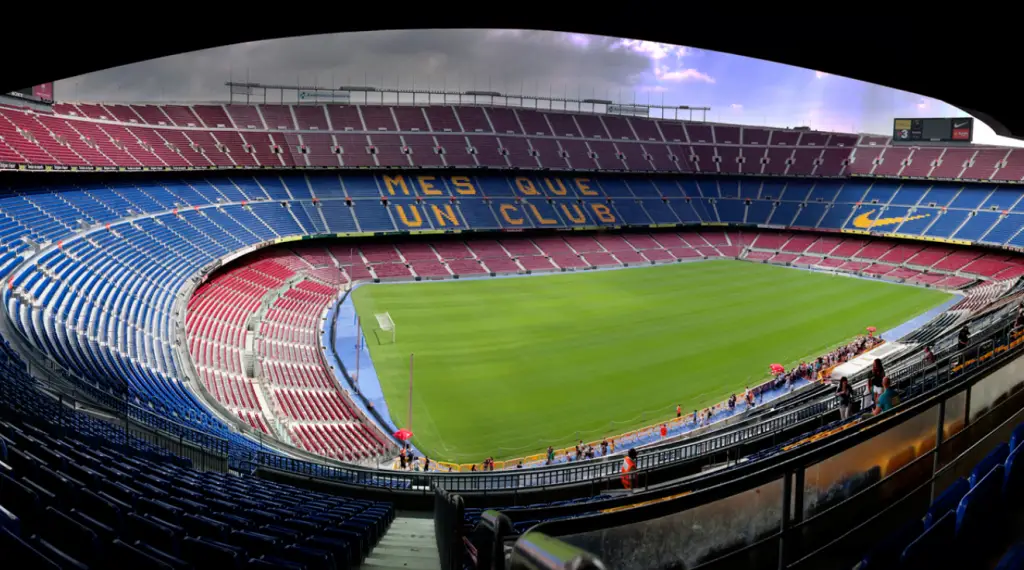
Nou Camp Nou Video
The Camp Nou stadium is a bit outdated since only one stand has a roof, and therefore a huge renovation plan has been announced in 2015. This renovation will not only cost a total of €600 million but will also increase the seating capacity to 105,000.
The entire project. is expected to be completed in the year 2024, and upon completion, the newly renovated stadium will be called the “Nou Camp Nou.”
Get a glimpse of this amazing project in this short video.
This concludes our top 10 biggest football stadiums in Europe list. As you can see, Europe is home to some amazing football arenas and we look forward to updating this list as soon as some amazing projects get completed!












